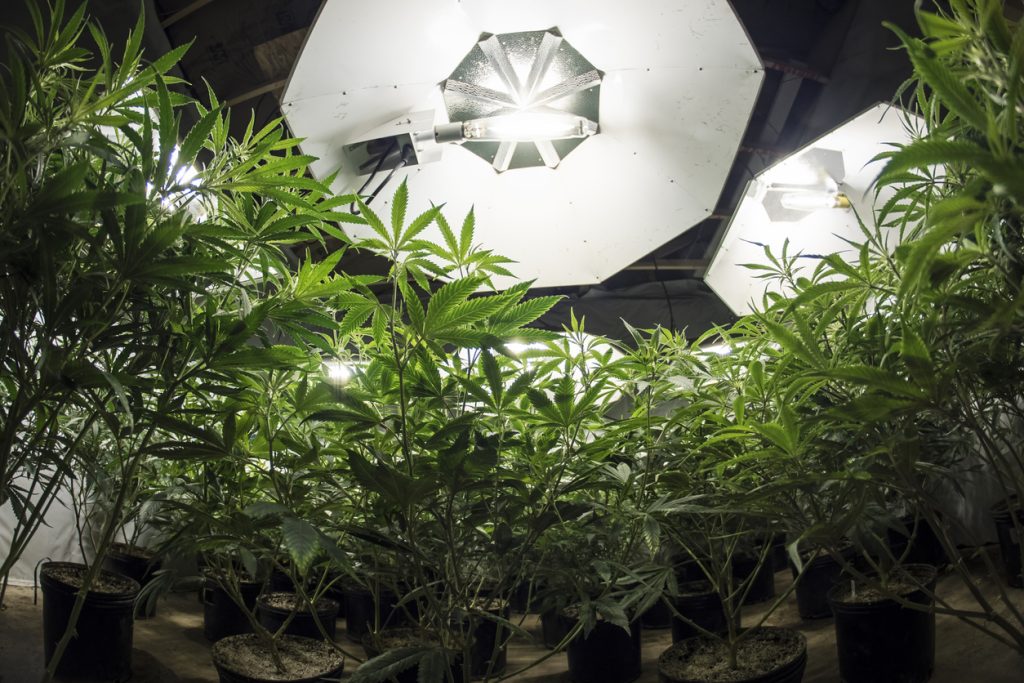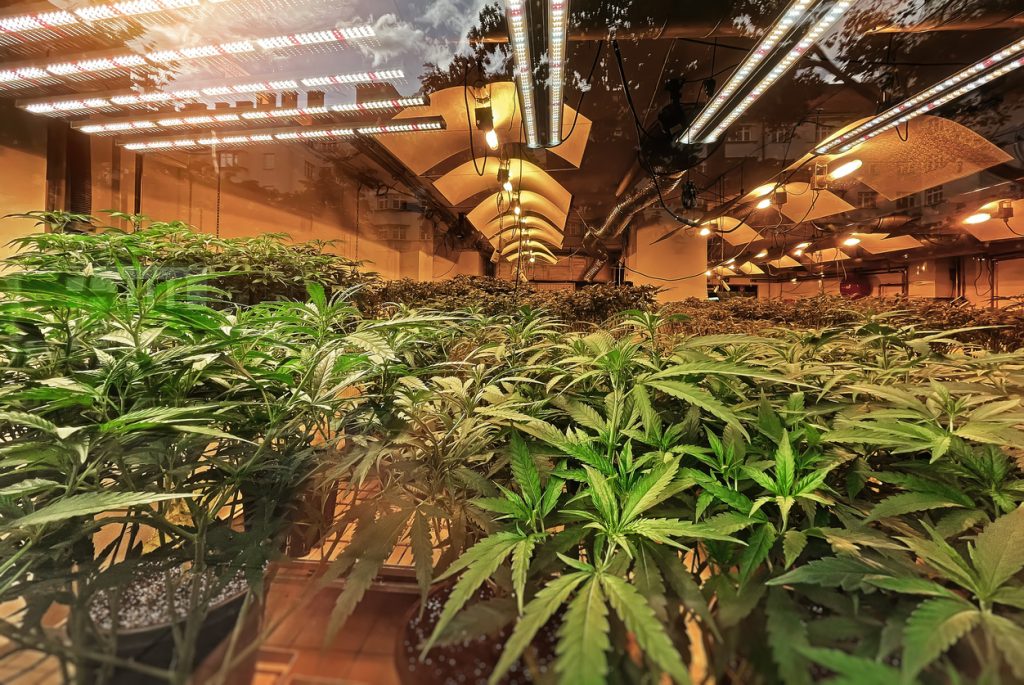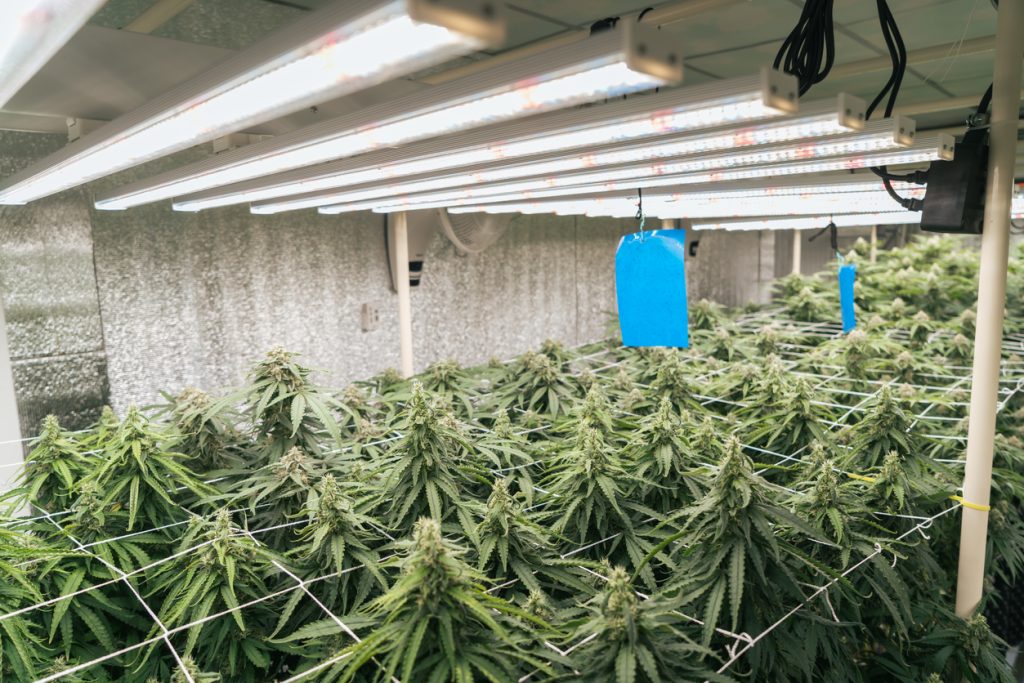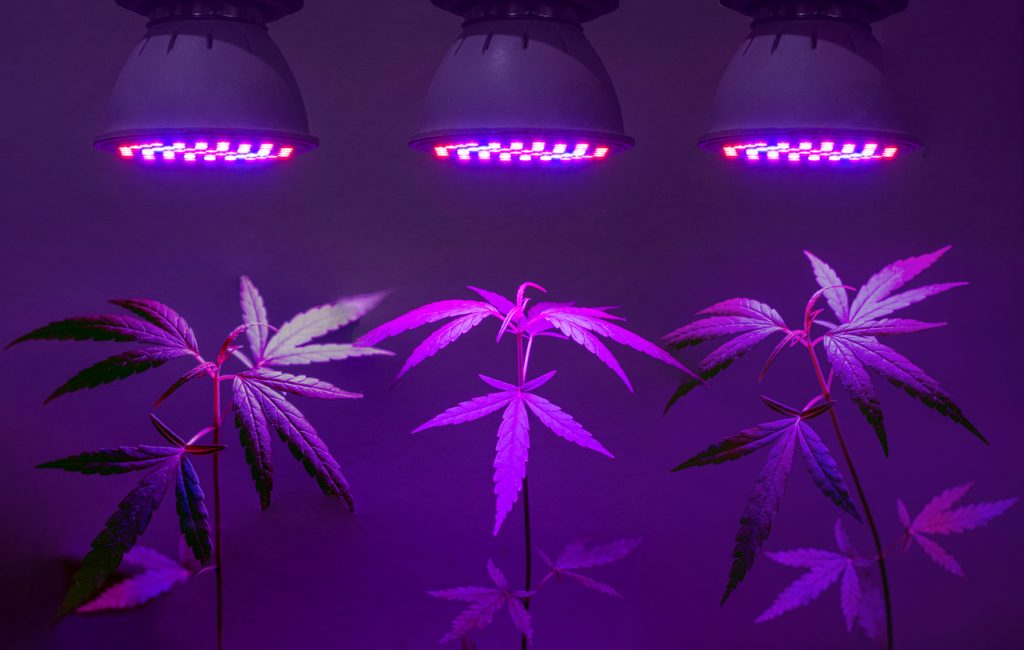LED grow lights, incandescent light bulbs, HID lights, fluorescent lights, compact fluorescent lamps, and many more, are all types of lights that you can use for growing cannabis. Growing cannabis does of course require you to provide the cannabis plant with light energy, or in other words UV light, so they can grow properly.
A good cannabis grow light will provide your cannabis plants with the right amount of UV light, should be kept at the right distance, and ultimately helps those cannabis plants perform photosynthesis so they can grow big and strong even inside of that grow room.
Whether we are talking about the vegetative stage, the flowering stage, or anything in between, if you have plants inside of that cannabis grow space, you’ll absolutely need to provide them with energy efficient lights.
The light source is extremely important to consider, as are other factors, all of which we will discuss here today. If you want to grow weed, light management is very important. Grow spaces of all sizes need to have the right kinds of lights, and this is exactly what we are here to discuss today. This is a guide for all home growers who need tips on managing light in their cannabis grow rooms.

Types of Cannabis Grow Lights
One of the first things to consider here is that there are many different types of grow lights that you can get.
HID
First, you have high intensity discharge or HID lights, which are extremely popular for cannabis growth. They put out a whole lot of light energy and are great for increasing yields, but they can also get a bit hot and can be expensive too.
Fluorescent Lighting
You may also choose to use fluorescent lights, which are pretty basic. Fluorescent lights aren’t the most efficient and they don’t have the highest energy output, although they are generally cost effective. That said, fluorescent lights aren’t the first recommendation we would provide you with when growing cannabis plants.
Incandescent
When choosing cannabis lighting, some people may also choose incandescent lights, although these are fairly outdated. They are super cheap, but they also get really hot and don’t put out all that much like energy.
CFL
One of the much better options at your disposal CFL will grow lights. CFL grow lights are good for beginners, they don’t put out that much heat, and they aren’t very expensive. However, they don’t have the most light output and aren’t great for flowering.
HPS
You then also have HPS or high pressure sodium lights, which are great for large scale cannabis growth, but they do produce a lot of heat.
LED Lights
Of course, one of the most popular options here is the LED light. LED lights are efficient, they are cheap, they don’t cost much money to run, and they also provide your plants with a full spectrum of light.
Remember that LED lights, otherwise known as light emitting diodes, can be customized to provide your cannabis plants with the full spectrum of light that they need to grow properly. LED lights also aren’t too bad for your electricity bills.
Remember however, more important than the type of light is the light output, the light intensity, and the photosynthetically active radiation, which we will take a closer look at further below.

The Importance of the Light Spectrum with Grow Lights
Another important factor to consider when managing the lights for your cannabis plants is the light spectrum. Mainly, cannabis plants require red light and blue light to grow properly. If you plan to grow cannabis, you need to provide the plants with the right type of light according to the growth stage.
Cannabis plants need more blue light during the vegetative stage, and they need more red light during the flowering stage.
Blue light tends to be best for developing thick foliage whereas red light tends to be best for developing healthy and big buds. Therefore, the best LED lights you can get should allow you to customize the spectrum output. Some may put out blue light, some red light, some both at once, and some may you choose between the two.
Keep Light Intensity in Mind
Remember that we talked about the PAR levels or active radiation above. This is how much light intensity your specific grow lights put out.
During the seedling stage, the PAR level should be between 100 and 300, between 250 and 600 for the vegetative stage, and between 500 and 1050 for the flowering stage.
This will ensure that your cannabis plants get more than enough light to perform photosynthesis effectively. Also remember that your lights should have around 40 watts of power, or at least 30 watts of power, for each square foot of plant.
The Duration of Lighting
To provide your cannabis plants with the biggest boost possible, especially during the vegetative stage, providing them with 24 hours of life per day is recommended. Cannabis plants during their vegetative stage can keep growing indefinitely so long as they keep getting light all day long.
Therefore, we recommend going with a 24-hour lighting schedule for the first several months.
Of course, in order to cause the plant to switch to the flowering stage, you’ll need to reduce the lighting, and start providing your cannabis plant with 12 hours of light and 12 hours of dark everyday, and this schedule needs to be very strict. If you do not make this lighting schedule change, your cannabis plants will not start flowering.

Distribution and Reflection of Light
If you are growing indoors, one of the most important factors to keep in mind is that you can save a whole lot of money by using reflective surfaces. If you happen to be throwing your cannabis inside of a grow tent, this issue should already be taken care of.
The simple fact of the matter is that if you have reflective surfaces, you will automatically increase the light intensity inside of the grow space, even if the lights themselves are not overly strong.
Using reflective materials and surfaces will also allow light to penetrate much deeper into the inner portions of the plant, and will also provide parts of the plant with light that would otherwise be in the shade. Every good cannabis grower knows that using reflective surfaces is key to increasing cost effectiveness.
Distance from Plants
Yet another important factor when managing light for your cannabis plants is the distance at which you keep the lights from those plants. Remember, you need around 40 watts per square foot, but you also need to keep distance in mind.
For instance, if you are using a 200 Watt LED light, it should be kept between 12 and 20 inches from the top of the plants. However, if you are using much more powerful lights, such as 1000-Watt LED lights, these should be between 36 and 46 inches from the canopy of your cannabis plants.
Using Supplemental Lighting
If you plan on providing your weed plants with more than enough light, although LED lighting is fine, to allow for maximum plan to growth, you may also want to use some supplemental lighting. Using a supplemental light will allow you to provide your plants with more intense light, and in more areas. What we are talking about here is using horizontally placed lights along the sides of your grow tent, as opposed to just using one or two lights from the top.
Putting lights on the side of your growth space will allow for increased light penetration and ultimately for more flower and growth. Although you might spend a bit more money at first, in the long run, you should end up saving money.
This is especially the case if you go with the right kinds of LED lights, and these can be beneficial for both your cannabis plants and your electricity bill. There is also the fact that good LED lights also tend to have a relatively long lifespan, which is why they are usually the number one choice for many growers, particularly commercial growers.

Light Training Techniques for Increased Cannabis Growth
Using some light training techniques, such as the tie down method, can help increase the amount of light penetration that the entirety of your plants get. It’s all about exposing the maximum amount of plant matter to as much light as possible.
